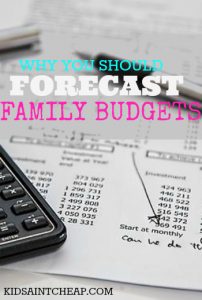Ever feel like your paycheck disappears before the month even starts? You’re not alone. Raising a family is expensive, and it’s easy to overlook the small, everyday decisions that quietly sabotage your savings goals. While some spending habits seem harmless in the moment, they can drain your family budget faster than you think. If you’re ready to take back control and start saving with purpose, here are ten common habits to watch out for—and how to shift them in your favor.
1. Overspending on Convenience Foods
Grabbing pre-packaged snacks, frozen dinners, or takeout meals may save time, but it comes with a hefty price tag. These costs add up fast when you’re feeding a family, especially if it becomes the go-to solution on busy weeknights. Cooking at home doesn’t have to be gourmet—simple meals made in bulk can stretch your dollars much further. Planning meals in advance and shopping with a list can reduce impulse buys. Even one or two home-cooked dinners a week can noticeably impact your family budget.
2. Subscriptions You Forgot You Had
From streaming services to monthly activity boxes for the kids, subscriptions can sneak into your budget and stay there without you noticing. Many families are paying for multiple services they rarely use—or forgot they even signed up for. These charges can quietly eat away at your monthly cash flow. Review your bank and credit card statements quarterly to spot anything unnecessary. Canceling just a couple of unused subscriptions can instantly put more money back into your family budget.
3. Shopping Without a List
Wandering into the grocery store or big-box retailer without a list is a sure way to spend more than you meant to. When you shop without a plan, it’s easy to toss extras in the cart, especially with kids in tow. Those little impulse buys may seem small, but they add up by the end of the month. Take a few minutes to write out what you need before you go—and stick to it. Your wallet will thank you, and you’ll reduce food waste too.
4. Paying for Name Brands Only
Brand loyalty can cost more than it’s worth, especially when it comes to household essentials and groceries. Store brands or generic versions often offer the same quality at a lower price. In some cases, they’re made in the same factories as name-brand products. Try swapping out a few items each week and see if anyone notices. Saving even $1 or $2 per product adds up quickly across your entire family budget.
5. Relying Too Much on Credit
Using credit cards for daily expenses can be risky if you’re not paying the balance off each month. Interest charges and late fees can balloon over time, turning small purchases into long-term debt. This kind of spending habit keeps your family budget under constant pressure. Consider using cash or a debit card for non-essential items to stay more mindful. If you do use credit, treat it like a tool—not a safety net.
6. Not Tracking Your Spending
If you’re not tracking where your money goes, it’s nearly impossible to manage your family budget effectively. Even if you think you have a general idea, small, frequent expenses can fly under the radar. Budgeting apps or even a simple spreadsheet can reveal patterns you didn’t know existed. Once you have clarity, you can start making adjustments that truly make a difference. Awareness is the first step to better financial health.
7. Buying New Instead of Used
From clothes to toys to furniture, buying brand new isn’t always necessary. Gently used items—especially for fast-growing kids—can save a fortune. Many resale shops, community groups, and online marketplaces offer great quality at a fraction of retail prices. Get into the habit of checking used options first before hitting the store. Your family budget will benefit from every reused bargain.
8. Ignoring Utility Costs
Leaving lights on, blasting the heat, or running appliances unnecessarily can inflate your monthly utility bills. These hidden costs can strain your family budget without much notice. Get the kids involved in energy-saving habits like turning off lights, unplugging devices, or shortening showers. Even small adjustments can reduce your overall utility usage. That’s money you can redirect toward savings or more meaningful spending.
9. Buying in Bulk Without a Plan
Buying in bulk seems like a smart way to save—but only if you use what you buy. Stockpiling perishable foods, oversized toiletries, or items your family rarely uses leads to waste and overspending. Make sure your bulk purchases fit into your actual needs and storage space. Otherwise, that “deal” might cost you more in the long run. A smarter strategy is buying only what you’ll realistically consume.
10. Skipping a Monthly Budget Check-In
Setting a budget is great, but ignoring it once it’s in place won’t help much. A quick monthly review helps catch issues early, adjust for changing expenses, and celebrate wins. Many families skip this step, which can lead to budget leaks over time. Set a date on the calendar to sit down and check in, even if it’s just for 15 minutes. Treat it like a regular health check for your finances.
Small Shifts Make a Big Difference
Fixing your family budget doesn’t require a total overhaul—just a willingness to examine your habits and adjust where it matters. Every small change you make adds up to more breathing room, less stress, and better control over your money. Once you get momentum, sticking to your budget becomes less about sacrifice and more about empowerment.
Which of these spending habits have you caught yourself doing? What tricks help you stick to your family budget? Share your tips in the comments!
Read More:
7 Expenses That Are Quietly Wrecking Your Family Budget
10 Effective Tips to Build a Budget for You and Your Family
Catherine is a tech-savvy writer who has focused on the personal finance space for more than eight years. She has a Bachelor’s in Information Technology and enjoys showcasing how tech can simplify everyday personal finance tasks like budgeting, spending tracking, and planning for the future. Additionally, she’s explored the ins and outs of the world of side hustles and loves to share what she’s learned along the way. When she’s not working, you can find her relaxing at home in the Pacific Northwest with her two cats or enjoying a cup of coffee at her neighborhood cafe.












